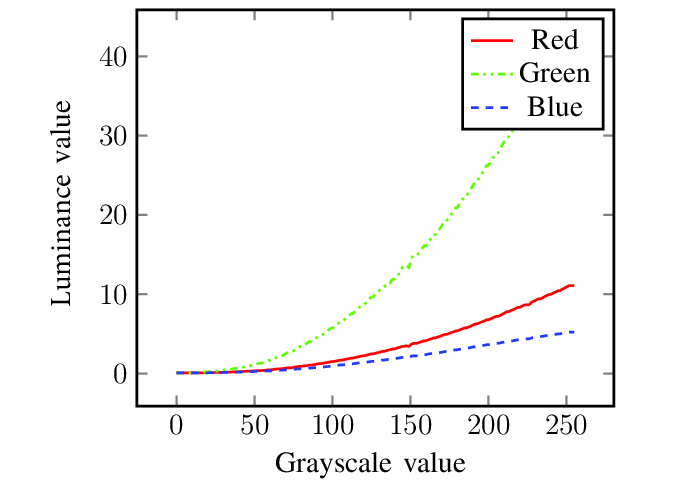Blog/2024.08.08
With the continuous advancement of technology, LED displays are playing an increasingly important role in various application scenarios, whether it be outdoor billboards, indoor conference displays, or stage backdrops. LED displays have gained widespread recognition in the market due to their superior performance and display quality. However, many users may still have some confusion about the core parameters of LED displays – grayscale and brightness. This article will delve into the relationship between grayscale and brightness in LED displays to help you better understand this technology.

I. Basic Concepts of Grayscale and Brightness
First, let’s clarify the basic concepts of grayscale. Grayscale refers to the brightness level of each pixel on the display. For digital display technology, grayscale is the determinant of the number of display colors. Generally, the higher the grayscale, the richer the colors the LED display can present, and the more delicate the image, making it easier to show rich details. Brightness, on the other hand, refers to the overall luminous intensity of the display screen and is an important indicator of the brightness of the display screen.
II. The Close Relationship Between Grayscale and Brightness
In LED displays, grayscale and brightness are not isolated but are interrelated and influence each other. By adjusting the grayscale level, you can achieve precise control of brightness. Specifically, changing the current flowing through the LED or using pulse-width modulation (PWM) technology are effective methods for controlling the grayscale level and adjusting brightness.
III. Grayscale Control Methods
Grayscale control is the key technology for LED displays to achieve different brightness levels. The common grayscale control methods mainly include two types: changing the current flowing through the LED and pulse-width modulation (PWM).
Changing the Current Flowing Through the LED
① Principle: By adjusting the current flowing through the LED to change its luminous brightness, grayscale control is achieved. Generally, the brightness of the LED is proportional to the current flowing through it, but due to saturation effects, the relationship between the brightness and current of red LEDs may not be strictly proportional.
② Application: This method is more direct, but in practical applications, attention must be paid to the stability and safety of the current to avoid damaging the LED due to excessive current.
Pulse Width Modulation (PWM)
① Principle: PWM technology controls the brightness of the LED by periodically changing the width of the light pulse (i.e., duty cycle). At a sufficiently high refresh rate, the human eye cannot perceive the changes in brightness, thus achieving continuous brightness adjustment.
② Advantages: PWM technology is more suitable for digital control and can effectively reduce power consumption, which is why it has been widely used in modern LED displays. By using PWM technology, high-grayscale display effects can be easily achieved, improving the image delicacy and color richness.
③ Implementation: The scanning board decomposes the grayscale values from the main control box and then transmits them serially in the form of pulses to the corresponding LEDs. Each LED has its own pulse width modulator to control the lighting time, thus achieving precise grayscale control.
IV. Techniques for Adjusting Brightness with Grayscale
Adjustment Process
In the control system of the LED display, the grayscale control parameters are adjusted to change the grayscale level. These parameters may include the current size, PWM signal duty cycle, etc. According to different adjustment methods (changing the current or PWM), the system will adjust these parameters accordingly to achieve brightness adjustment.
The balance between grayscale and brightness is crucial. Excessive brightness may bring a strong visual impact but can cause discomfort to the eyes if viewed for an extended period. Conversely, insufficient brightness can lead to the loss of image details and affect the viewing experience. Therefore, it is particularly important to adjust the grayscale and brightness of LED displays according to different application scenarios.
For instance, in outdoor environments with high brightness, it is necessary to increase the brightness of the display to ensure clear visibility of the content. In indoor environments with low brightness, it is advisable to lower the brightness to reduce visual fatigue. Additionally, by optimizing the grayscale level, the image can be made even more detailed and colorful, enhancing the viewing experience for users.
In summary, there is a close relationship between grayscale and brightness in LED displays. By scientifically and reasonably adjusting these parameters, the performance advantages of LED displays can be fully utilized to provide users with a higher quality and more efficient visual experience. With the continuous progress of technology and the expansion of applications, there is reason to believe that LED displays will showcase their unique charm and value in more fields.
+86-(0)731-84539619
Hunan Yestech Optoelectronic Co., Ltd. Terms of Service Privacy Policy Powered by szweb